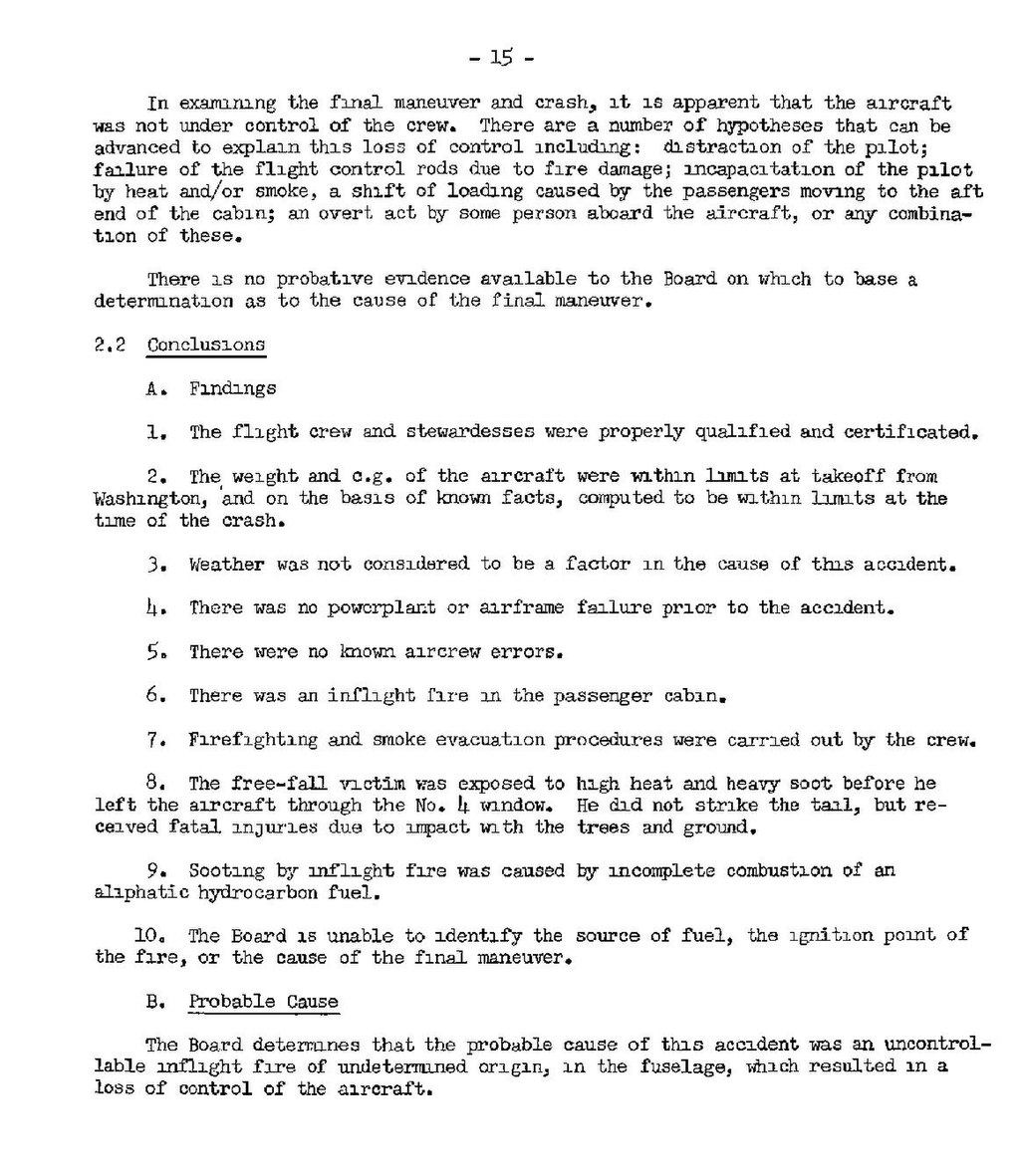- 15 -
In examining the final maneuver and crash, it is apparent that the aircraft was not under control of the crew. There are a number of hypotheses that can be advanced to explain this loss of control including: distraction of the pilot; failure of the flight control rods due to fire damage; incapacitation of the pilot by heat and/or smoke; a shift of load caused by the passengers moving to the after end of the cabin; an overt act by some person aboard the aircraft, or any combination of these.
There is no probative evidence available to the Board on which to base a determination as to the cause of the final maneuver.
2.2 Conclusions
A. Findings
- The flight crew and stewardesses were properly qualified and certificated.
- The weight and c.g. of the aircraft were within limits at takeoff from Washington, and on the basis of known facts, computed to be within limits at the time of the crash.
- Weather was not considered to be a factor in the cause of this accident.
- There was no powerplant or airframe failure prior to the accident.
- There were no known aircrew errors.
- There was an inflight fire in the passenger cabin.
- Firefighting and smoke evacuation procedures were carried out by the crew.
- The free-fall victim was exposed to high heat and heavy soot before he left the aircraft through the no. 4 window. He did not strike the tail, but received fatal injuries due to impact with the trees and ground.
- Sooting by inflight fire was caused by incomplete combustion of an aliphatic hydrocarbon fuel.
- The Board is unable to identify the source of fuel, the ignition point of the fire, or the cause of the final maneuver.
B. Probable Cause
The Board determines that the probable cause of this accident was an uncontrollable inflight fire of undetermined origin, in the fuselage, which resulted in a loss of control of the aircraft.
